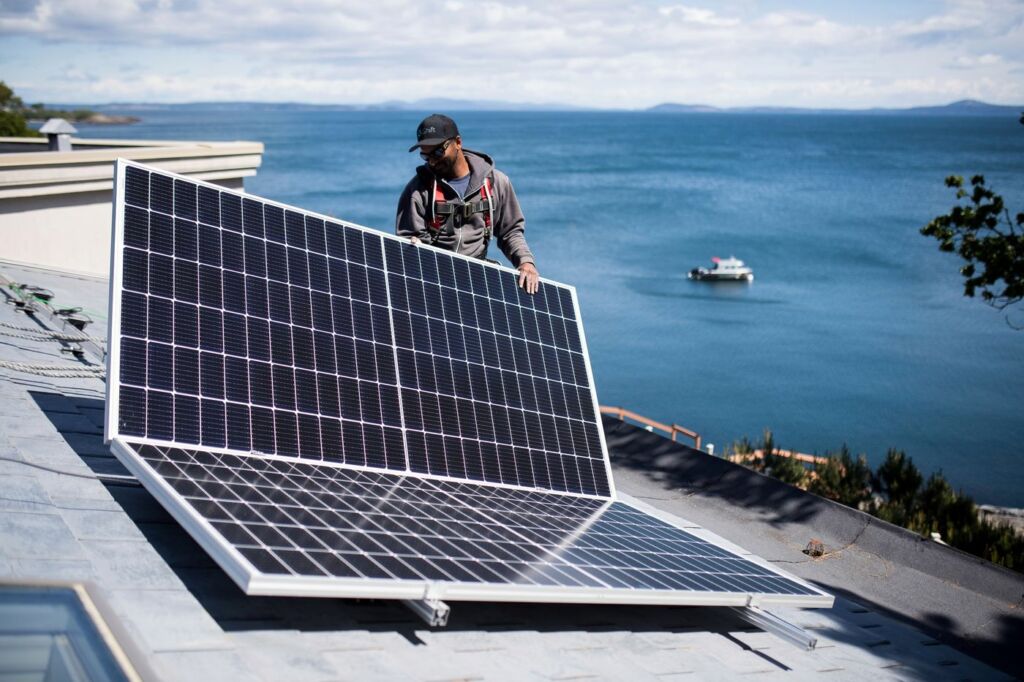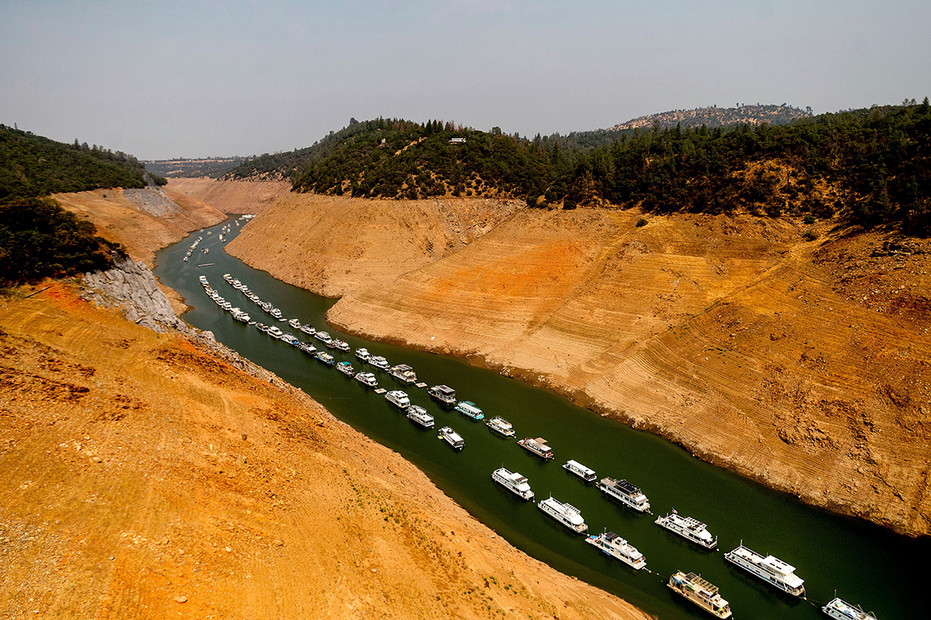This topic is one I’ve covered before but since it keeps coming up I’ll reiterate. It really irks me that I hear all the time about how much it is going to cost to transition to a fossil fuel free economy and world. They make it sound like someone will put up this money and it will magically disappear. First of all, those trillions and trillions of dollars, pesos, pounds, marks, etc. will go into the pockets of individuals eventually and be spread around our country in grocery stores and car dealerships and every other place money is spent. This in itself will create jobs and profits indirectly. But more importantly, the businesses that actually perform the work of transition building and installing renewable energy, electric vehicles and everything else required to save our planet will be making profits like the planet has never seen before. So, tell me, how can this described as “the cost” of transition??? Why aren’t we talking about the unprecedented opportunity to make money?
I appreciate that McKinsey & Co. has done an analysis that breaks down the amount of money that will be required to make the transition to a fossil free economy. They have reduced it from a staggering amount of dollars to one that is only a tiny fraction of this total by showing that we’re already spending most of the cash on things today. Thus, those funds must only be redirected with the result being that the marginal “cost” is very manageable. And from my perspective it’s not a cost but an investment opportunity which someone will make money doing.
The Cost to Reach Net Zero By 2050 Is Actually a Bargain
A multi-trillion-dollar global investment seems massive. But the closer you look, the smaller the numbers become.
January 28, 2022
https://www.bloomberg.com/news/articles/2022-01-28/the-cost-to-reach-net-zero-by-2050-is-actually-a-bargain
“The McKinsey report makes it clear that the political headaches are well worth the fight. After all, on net, the transition implies more investment, more economic growth, and also more jobs—to say nothing about a more livable planet and newer, better technologies, from well-insulated homes to better and more efficient modes of transport. “

“A trillion here, a trillion there: The headline figure in the latest analysis of the costs of achieving net-zero emissions, from McKinsey & Co., is a staggering $9.2 trillion a year, every year, between now and 2050. That comes to a grand total of $275 trillion worth of investments in energy assets and land-use systems ranging from agriculture to forestry.
These numbers are larger than some past estimates have assumed, pointing to the scope of the challenge. Relative to the size of the global economy, they might look larger still—equaling between 6% and almost 9% of global economic output.
But the closer one looks at this particular set of trillions of dollars, the smaller the numbers become, turning the challenge of the clean energy transition into a global opportunity.”
Moving on to more of this week’s news it’s mostly more of the same. More and more investment and commitment to electric vehicles (EVs), better batteries and breakthroughs, coal plant shutdowns, impacts of climate change and a hotter planet, health impacts of increasing heat, etc. Check out these titles and click on the articles if you care to read in depth. I apologize though that the E&E articles are by subscription only.
GM Plans Six-Fold Increase in 2022 Electric Truck, SUV Production -Sources
February 12, 2022
https://www.reuters.com/business/autos-transportation/gm-plans-six-fold-increase-2022-electric-truck-suv-production-sources-2022-02-08/?mc_cid=803eaca5ba&mc_eid=8f4760cc57
General Motors Co (GM.N) plans to increase production of electric trucks and Cadillac sport utility vehicles this year by more than six times the previously planned output, according to information shared with suppliers.
Note that once again, an auto manufacturer is INCREASING its plans to produce EVs. I keep telling you that this is going to continue to happen pushing the transition to all EVs sooner and sooner. This is gonna happen over and over. And competition is pushing this phenomena even faster.
Ford, GM pull ahead EV plans as profits grow
Record earnings for GM in 2021 and nearly $18 billion in net income for Ford are giving the automakers confidence to accelerate their EV commitments.
https://www.autonews.com/automakers-suppliers/ford-gm-pull-ahead-ev-plans-profits-grow
DETROIT — With the financial pain of the global microchip shortage largely behind them, General Motors and Ford Motor Co. are racing to become leaders in electric vehicles even faster than planned with the help of growing profits from their internal combustion vehicles.
Just in case you forgot that the coal industry is a dead man walking…the plant retirements continue unabated and actually even accelerating.
More than 23 GW of Coal Capacity to Retire in 2028 as Plant Closures Accelerate
https://www.spglobal.com/marketintelligence/en/news-insights/latest-news-headlines/more-than-23-gw-of-coal-capacity-to-retire-in-2028-as-plant-closures-accelerate-68709205?mc_cid=ec001eb238&mc_eid=8f4760cc57
S&P Global February 10, 2023
U.S. coal-fired generating capacity is set to take a record plunge in 2028 in advance of tough environmental rules, with more than 23 GW scheduled to come offline, dwarfing the previous retirements record set in 2015.
Under price pressure from renewable power and a national move away from high-emission fuels, utilities plan to shutter 51 GW of coal power from 2022 through 2027, according to S&P Global Market Intelligence analysis. But in 2028 alone, retirements will jump by 23 GW, and that doesn’t include the retirements of the 1,700-MW Conemaugh and 1,700-MW Keystone coal-fired power plants in Pennsylvania that were reported by media. As in 2015, when a rule establishing strict mercury emissions limitations went into effect, plants will be shuttering to avoid complying with new environmental rules.
“It’s going to get worse before it gets better,” said Steve Piper, director of energy research at Market Intelligence. “We’re going to see more retirements coming up.”
The collapse in the cost of wind and solar power along with years of low natural gas prices left coal power a high-priced, high-emissions source of electricity. Power generators are increasingly building solar and wind resources when retiring coal-fired power plants. Utilities have already been retiring their coal plants at a rapid clip,
Another topic I’ve been continually reporting on is how the federal government agency, FERC (Federal Energy Regulatory Commission) is transforming in such a way as to retard the fossil fuel industry and accelerate the conversion from fossil fuel use for producing electricity to renewables.
FERC issues ‘historic’ overhaul of pipeline approvals
The agency updated a 23-year-old policy on natural gas and laid out a framework for evaluating projects’ greenhouse gas emissions.
Turning to what is actually happening to our planet already, it’s a pretty grim picture. The events that we are seeing are only a hint of what we have already built into our future. I’ll leave for another edition to report on efforts to prepare for the changes that are coming but for now take a look at these articles.
Sea Ice Around Antarctica Reaches a Record Low
The drop surprised scientists, and may help them understand more about climate change affecting Antarctica and its waters.
The New York Times February 23, 2022

Credit…Johan Ordonez/Agence France-Presse — Getty Images
Sea ice around Antarctica has reached a record low in four decades of observations, a new analysis of satellite images shows.
“It’s really unprecedented,”
‘Unprecedented’ melting found beneath Greenland’s ice sheet
A previously overlooked process is likely to blame.
https://subscriber.politicopro.com/article/eenews/2022/02/24/unprecedented-melting-recorded-beneath-the-greenland-ice-sheet-00011139

Water flows into a moulin on the surface of the Store Glacier in Greenland.Poul Christoffersen
CLIMATEWIRE | The vast Greenland ice sheet may be melting from the bottom up at much higher rates than scientists previously suspected, a new study suggests. And an overlooked process is likely to blame.
Western ‘megadrought’ is the worst in 1,200 years
An exceptionally dry year in 2021 pushed the 22-year-long drought to the top of the record books. Scientists say climate change is a major factor.

Houseboats line up in a channel at Lake Oroville State Recreation Area in Butte County, Calif., in August. New research says the Western drought is worse than any drought in the past 1,200 years.AP Photo/Noah Berger
CLIMATEWIRE | The searing “megadrought” that has gripped the southwest U.S. for more than two decades is the driest 22-year period in at least 1,200 years. The region hasn’t seen a more severe drought since the start of the scientific record around the year 800, according to new research published yesterday.
An exceptionally dry year in 2021 helped break the record.
And finally this.
Airbus aims for test flight of hydrogen jet engine
The trial run will be as a fifth engine on a four-engine Airbus A380, the world’s biggest jet passenger aircraft.
E&E News 02/23/2022
CLIMATEWIRE | Airbus SE, one of the world’s largest aerospace companies, is preparing the first flight test of a hydrogen-powered jet engine on a modern commercial airliner, hoping to have the first new carbon emission-free commercial airliner in service as early as 2035.
The European-based company announced yesterday it has signed an agreement with General Electric Co. and Safran Aircraft Engines, a French engine manufacturer, to demonstrate an engine that will burn “green” hydrogen.
After what Airbus described as “extensive” ground-based testing, the first airborne test will be as a fifth engine on a four-engine Airbus A380, the world’s biggest jet passenger aircraft. The new engine, fed by super-cold liquid hydrogen fuel, will help power the double-decker jet.



